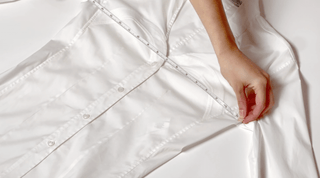Navigating the world of online shopping for vintage clothing can be both exciting and challenging, especially when it comes to ensuring the perfect fit. At Modig, we created a few in-depth guides to help you decode measurements and make informed choices while shopping online.
See our last post for our guide to taking your own body measurements, but another effective way to gauge fit is to use the measurements of a similar garment you already own. We'll walk you through essential measurements for various types of garments, ensuring you're equipped with the knowledge you need to find the perfect fit.
Measuring Tips
- Choose a garment that fits you well in a similar style or category to what you are assessing online
- Use a soft tape measure that does not stretch
- Lay the garment flat
- Hold the garment and measuring tape taught, not tight or overstretched
- Identify fixed seams and areas that are more fitted
- Take into account the thickness of the fabric and lining
- Measurements that imply a circumference (bust, waist, hips, head, etc.) are doubled, length measurements (shoulders, sleeves, inseam, full length, etc.) are not
Bust Measurement: Lay the garment flat and measure from underarm seam to the other underarm seam. If the garment has built-in cups or extra room in the bust, measure slightly looser, following along the shape of the cups to accommodate the cup size. Double the measurement.
Waist Measurement: For garments with a fixed waist measurement, find the waistband or the smallest part of the waist and measure from left to right seam. If there is an elastic waistband, measure from the unstretched to the most comfortably stretched point. For garments without a defined waist, estimate the waist location by finding the center point between the top of the garment and hip area. Double the measurement.
Hip Measurement: For the hip measurement, measure the widest part of the garment below the waist. If the garment is lined or has an under dress, measure the piece that touches the skin for accuracy. Double the measurement.
Shoulder Measurement: Lay the garment flat and measure from shoulder seam to shoulder seam. If the garment has a cut-in design for accommodating certain sleeve types, measure across both the cut-in and estimated shoulder points.
Sleeve Measurement: Measure from shoulder seam to cuff, unless the sleeve lacks a shoulder seam. In that case, measure from the underarm seam to the cuff or end of the sleeve.
Pant Measurements: There are a few crucial pant measurements to take into account when trying to assess fit:
- Pant Rise: Measure from the crotch seam to the top of the waist.
- Inseam: Measure from the crotch seam to the bottom of the inside leg seam.
- Length: Measure from the top of the waist down to the hem along the outer side seam.
- Waist: Measure from left to right seam, holding both the waist and measuring tape taught. Measure on the inside of the waist if the pants are especially thick or lined. Double the measurement.
- Hips: Measure 3" up from the crotch seam to find where the hip measurement is taken. Measure from side seam to side seam. Double the measurement.
Measuring Stretch Garments: When measuring garments with stretch, measure the garment both unstretched and stretched to a comfortable extent. Avoid over-stretching, as it can distort the measurements.
By keeping these measurements in mind, you'll be well-equipped to confidently shop for clothes online. Remember, knowing your own measurements is just as important as understanding the measurements provided by online retailers. Armed with this knowledge, you'll be able to make informed decisions and enjoy a seamless online shopping experience.

